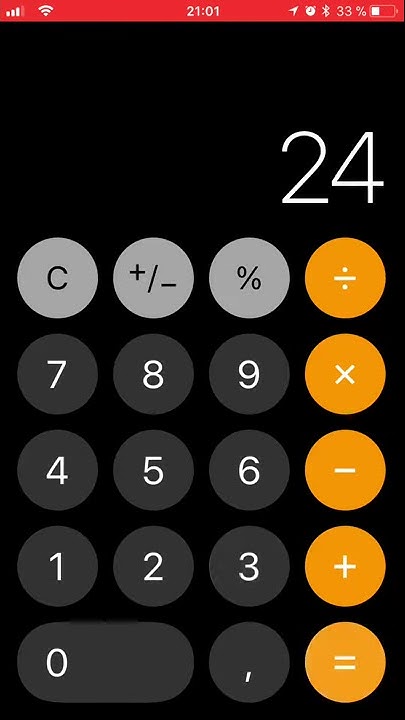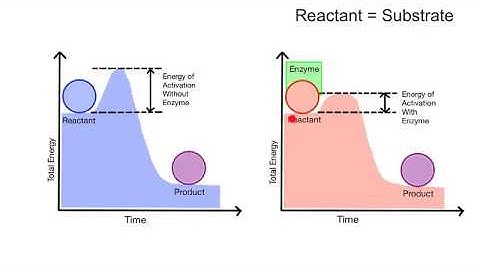Show
 In this explainer, we will learn how to form inequalities involving the measures of angles in a triangle given the lengths of the sides of the triangle. In an isosceles triangle, we can recall that the angles opposite the sides of equal length are of equal measure. The converse to this statement is also true: if two angles in a triangle have an equal measure, then the sides opposite these angles have the same length. We can use this idea to consider what happens if we have two sides in a triangle with different lengths. For example, consider the following triangle with two given side lengths and the measures of the opposite angles marked. We can compare the measures of the angles by flipping the triangle so that the angles are in the same orientation. We can see that the angle of measure 𝑦 is larger than the angle of measure 𝑥. In other words, the angle opposite the longer side has the larger measure. This result holds true in general. If we have a triangle 𝐴𝐵𝐶, where 𝐴𝐵>𝐴𝐶, then it is always true that 𝑚∠𝐴𝐶𝐵>𝑚∠𝐴𝐵𝐶; the angle opposite the longer s ide has a larger measure. We can state this result formally as follows. If we have a triangle where two sides have unequal lengths, then the angle opposite the longer side has a larger measure than the angle opposite the shorter side. In particular, consider △𝐴𝐵𝐶. If we know that 𝐴𝐵>𝐵𝐶, then 𝑚∠𝐶>𝑚∠𝐴. It is also worth noting that we can apply this result with the inequality reversed. In particular, if we have a triangle where two sides have unequal lengths, then the angle opposite the shorter side has a smaller measure. Let’s see an example of applying this result to construct an inequality for a triangle. Complete the following using <,>: If in the triangle 𝐷𝐸𝐹, 𝐷𝐸>𝐸𝐹, then 𝑚∠𝐹𝑚∠𝐷. We recall that the angle comparison theorem in triangles tells us that if we have a triangle where two sides have unequal lengths, then the angle opposite the longer side has a larger measure than the angle opposite the shorter side. Since we have a triangle and we are told that 𝐷𝐸>𝐸𝐹, we can conclude that the angle opposite 𝐷𝐸 must have a larger measure than th e angle opposite 𝐸𝐹. We can sketch the triangle to help determine the angles opposite these sides. We see that ∠𝐹 is opposite the side of length 𝐷𝐸 and ∠𝐷 is opposite the side of length 𝐸𝐹. The angle opposite the longer side must have a larger measure. Hence, 𝑚∠𝐹>𝑚∠𝐷. In our next example, we will see how to apply this result to form multiple inequalities for the measures of angles in a triangle when we are given all of its side lengths. Consider this triangle. Fill in the blanks in the following statements using =, <,>. We first recall that the angle comparison theorem in triangles tells us that if we have a triangle where two sides have unequal lengths, then the angle opposite the longer side has a larger measure than the angle opposite the shorter side. Equivalently, the angle opposite the shorter side has a smaller measure than the angle opposite the longer side. Since we are given all three side lengths in the triangle, we can compare any pair of side lengths to construct inequalities for the measures of the angles opposite the sides. Part 1 We want to compare the measures of the angles at vertices 𝐴 and 𝐵. The sides opposite these angles are 𝐵𝐶 and 𝐴𝐶 respectively. We know that 𝐵𝐶=15cm and that 𝐴𝐶=14cm. Thus, 𝐵𝐶>𝐴𝐶. The angle comparison theorem in triangles then tells us that the angle opposite 𝐵𝐶 must have a larger measure than the angle opposite 𝐴𝐶. Hence, 𝑚∠𝐴>𝑚∠𝐵. Part 2 We can follow the same process to compare the measures of the angles at vertices 𝐵 and 𝐶. The sides opposite these angles are 𝐴𝐶 and 𝐴𝐵 respectively. We know that 𝐴𝐶=14cm and that 𝐴𝐵=10cm. Thus, 𝐴𝐶>𝐴𝐵. The angle comparison theorem in triangles then tells us that the angle opposite 𝐴𝐶 must have a larger measure than the angle opposite 𝐴𝐵. Hence, 𝑚∠𝐵>𝑚∠𝐶. Part 3 To compare the measures of the angles at vertices 𝐶 and 𝐴, we consider the sides opposite these angles, 𝐴𝐵 and 𝐵𝐶. We know that 𝐴𝐵=10cm and that 𝐵𝐶=15cm. Thus, 𝐴𝐵<𝐵𝐶. The angle comparison theorem in triangles then tells us that the angle opposite 𝐴𝐵 must have a smaller measure than the angle opposite 𝐵𝐶. Hence, 𝑚∠𝐶<𝑚∠𝐴. In the previous example, we saw that we can use the angle comparison theorem in triangles to construct three inequalities for the measures of the angles in a triangle by using its side lengths. In particular, we can use this to order all of the measures of the angles in the triangle. For example, in the previous question, we saw that 𝑚∠𝐴>𝑚∠𝐵 and that 𝑚∠𝐵>𝑚∠𝐶. This means that 𝑚∠𝐴 must be larger than 𝑚∠𝐶. We can write this as a compound inequality: 𝑚∠𝐴>𝑚∠𝐵>𝑚∠𝐶. This application of the angle comparison theorem gives us the following property. If we have a triangle where all of its sides have unequal lengths, then the angle opposite the longest side has the largest measure and the angle opposite the shortest side has the shortest measure. In particular, consider △𝐴𝐵𝐶. If we know that 𝐴𝐶>𝐴𝐵>𝐵𝐶, then we can conclude that 𝑚∠𝐵>𝑚∠𝐶>𝑚∠𝐴. In our next example, we will compare the measures of two angles in a triangle using the angle comparison theorem and the axioms of inequalities. Given 𝐴𝐵=92cm, 𝐴𝐶=91cm, and 𝐶𝐸=𝐵𝐷, choose the correct relationship between 𝑚∠𝐴𝐸𝐷 and 𝑚∠𝐴𝐷𝐸. AnswerWe are asked to compare the measures of ∠𝐴𝐸𝐷 and ∠𝐴𝐷𝐸, two angles of triangle 𝐴𝐸𝐷. In order to do this, we first recall that the angle comparison theorem in triangles tells us that if we have a triangle where two sides have unequal lengths, then the angle opposite the longer side has the larger measure. This means we can compare the measures of ∠𝐴𝐸𝐷 and ∠𝐴𝐷𝐸 by comparing the lengths of their respective opposite sides, 𝐴𝐷 and 𝐴𝐸. We can add the lengths of 𝐴𝐵 and 𝐴𝐶 onto the diagram. We are told that 𝐴𝐵=92cm and 𝐴𝐶=91cm, so 𝐴𝐵>𝐴𝐶. We can recall that subtracting the same value from both sides of the inequality will give us an equivalent inequality. We can also note that 𝐴𝐷=𝐴𝐵−𝐵𝐷 and 𝐴𝐸=𝐴𝐶−𝐶𝐸 and that 𝐶𝐸=𝐵𝐷. Thus, we can subtract 𝐶𝐸 from both sides of the inequality to get 𝐴𝐵−𝐶𝐸>𝐴𝐶−𝐶𝐸. We can now use the fact that 𝐶𝐸=𝐵𝐷 to rewrite the left-hand side of the inequality: 𝐴𝐵−𝐵𝐷>𝐴𝐶−𝐶𝐸. Now, we can substitute 𝐴𝐷=𝐴𝐵−𝐵𝐷 and 𝐴𝐸=𝐴𝐶−𝐶𝐸 to find that 𝐴𝐷>𝐴𝐸. In a triangle, if one side is longer than another side, then the angle opposite the shorter side has a smaller measure than that opposite the longer side. ∠𝐴𝐸𝐷 is opposite 𝐴𝐷 and ∠𝐴𝐷𝐸 is opposite 𝐴𝐸; therefore, we conclude that 𝑚∠𝐴𝐸𝐷>𝑚∠𝐴𝐷𝐸. Before we move on to our next example, it is worth noting that we can prove the angle comparison theorem in triangles using our knowledge of isosceles triangles, inequalities, and exterior angles in triangles. First, let’s assume we have a triangle 𝐴𝐵𝐶 with 𝐴𝐵>𝐵𝐶. We want to show that 𝑚∠𝐶>𝑚∠𝐴. Since 𝐴𝐵>𝐵𝐶, there must be a point 𝑃 on 𝐴𝐵 such that 𝐵𝑃=𝐵𝐶. We can add this point 𝑃 onto our diagram and then sketch △𝐵𝑃𝐶. Since 𝐵𝑃=𝐵𝐶, we note that △𝐵𝑃𝐶 is an isosceles triangle and hence 𝑚∠𝐵𝑃𝐶=𝑚∠𝐵𝐶𝑃. We can add these angles onto the diagram. We can now note that ∠𝐵𝑃𝐶 is an exterior angle in △𝐴𝑃𝐶. We recall that the measure of the exterior angle in a triangle is equal to the sum of the measures of the two opposite interior angles or, alternatively, use the fact that it is a supplementary angle to ∠𝐴𝑃𝐶. Thus, 𝑚∠𝐵𝑃𝐶=𝑚∠𝐴+𝑚∠𝐴𝐶𝑃. In particular, we have 𝑚∠𝐵𝑃𝐶>𝑚∠𝐴. We must also have 𝑚∠𝐵𝑃𝐶+𝑚∠𝐴𝐶𝑃>𝑚∠𝐵𝑃𝐶>𝑚∠𝐴. Since 𝑚∠𝐵𝑃𝐶+𝑚∠𝐴𝐶𝑃=𝑚∠𝐶, we have shown 𝑚∠𝐶>𝑚∠𝐴. In our next example, we will use the angle comparison theorem in triangles to prove a result from a figure. In the figure, 𝐴𝐵>𝐵𝐶 and 𝐴𝐷>𝐷𝐶. Which of the following is true?
AnswerSince we are given the lengths of the sides in the figure and are asked to use this to compare the measures of the angles, we can recall the angle comparison theorem in triangles. This tells us that if we have a triangle where two sides have unequal lengths, then the angle opposite the longer side has a larger measure. To apply this result, we need to be working with a triangle with at least two side lengths we can compare. We can do this by adding in the line segment 𝐴𝐶. In △𝐴𝐵𝐶, we know that 𝐴𝐵>𝐵𝐶, so the angle opposite 𝐴𝐵 has a larger measure than the angle opposite 𝐵𝐶. We have that 𝑚∠𝐴𝐶𝐵>𝑚∠𝐵𝐴𝐶. Similarly, in △𝐴𝐶𝐷, we are told that 𝐴𝐷>𝐷𝐶, so the angle opposite 𝐴𝐷 has a larger measure than the angle opposite 𝐷𝐶. We have that 𝑚∠𝐴𝐶𝐷>𝑚∠𝐶𝐴𝐷. By adding the measures of the angles to give the measures of the angles at vertices 𝐴 and 𝐶, we have the following: 𝑚∠𝐵𝐴𝐷=𝑚∠𝐵𝐴𝐶+𝑚∠𝐶𝐴𝐷,𝑚∠𝐵𝐶𝐷=𝑚∠𝐴𝐶𝐵+𝑚∠𝐴𝐶𝐷. We know that 𝑚∠𝐴𝐶𝐵>𝑚∠𝐵𝐴𝐶 and 𝑚∠𝐴𝐶𝐷>𝑚∠𝐶𝐴𝐷; hence, ∠𝐵𝐶𝐷 is the combination of the two larger angles. Hence, 𝑚∠𝐵𝐶𝐷>𝑚∠𝐵𝐴𝐷. In our final example, we will use the angle comparison theorem in triangles to prove a result about the lengths of medians in a triangle. Given that 𝐴𝑀 is a median of triangle 𝐴𝐵𝐶 and that 𝐵𝑀<𝐴𝑀, what type of angle is ∠𝐵𝐴𝐶? AnswerWe can first recall the angle comparison theorem in triangles. This tells us that if we have a triangle where two sides have unequal lengths, then the angle opposite the longer side has a larger measure. We can apply this to the two triangles △𝐴𝐵𝑀 and △𝐴𝐶𝑀. First, since 𝐵𝑀<𝐴𝑀, the angle opposite 𝐵𝑀 must have a smaller measure than the angle opposite 𝐴𝑀 in △𝐴𝐵𝑀. Thus, 𝑚∠𝐵𝐴𝑀<𝑚∠𝐵. Second, since 𝐶𝑀=𝐵𝑀, we also have that 𝐶𝑀<𝐴𝑀. Therefore, the angle opposite 𝐶𝑀 must have a smaller measure than the angle opposite 𝐴𝑀 in △𝐴𝐶𝑀. Thus, 𝑚∠𝑀𝐴𝐶<𝑚∠𝐶. We can note that ∠𝐵𝐴𝑀 and ∠𝑀𝐴𝐶 combine to make ∠𝐴, so the sum of their measures gives the measure of ∠𝐴. We can add these two inequalities to get 𝑚∠𝐵𝐴𝑀+𝑚∠𝑀𝐴𝐶<𝑚∠𝐵+𝑚∠𝐶. Since 𝑚∠𝐵𝐴𝑀+𝑚∠𝑀𝐴𝐶=𝑚∠𝐴, we can rewrite the right-hand side of this inequality to get 𝑚∠𝐴<𝑚∠𝐵+𝑚∠𝐶. The right-hand side of this inequality is the sum of the measures of two of the interior angles of △𝐴𝐵𝐶. We can add 𝑚∠𝐴 to both sides of the inequality to get 𝑚∠𝐴+𝑚∠𝐴<𝑚∠𝐴+𝑚∠𝐵+𝑚∠𝐶. We know that the measures of the interior angles in a triangle sum to give 180∘. Therefore, we can rewrite the right-hand side of the inequality as 180∘ and we can simplify the left-hand side to get 2𝑚∠𝐴<180.∘ Finally, we divide both sides of the inequality by 2 to get 𝑚∠𝐴<90.∘ Hence, ∠𝐵𝐴𝐶 is acute. Let’s finish by recapping some of the important points from this explainer.
|

Pos Terkait
Periklanan
BERITA TERKINI
Toplist Popular
#2
#3
#4
Top 8 wenn kleinigkeiten am partner stören 2022
1 years ago#5
Top 7 hilfsmittel für behinderte im alltag 2022
1 years ago#6
#7
#8
Top 6 cafe da manha pobre 2022
1 years ago#9
#10
Periklanan
Terpopuler
Periklanan
Tentang Kami
Dukungan

Copyright © 2024 kemunculan Inc.


















